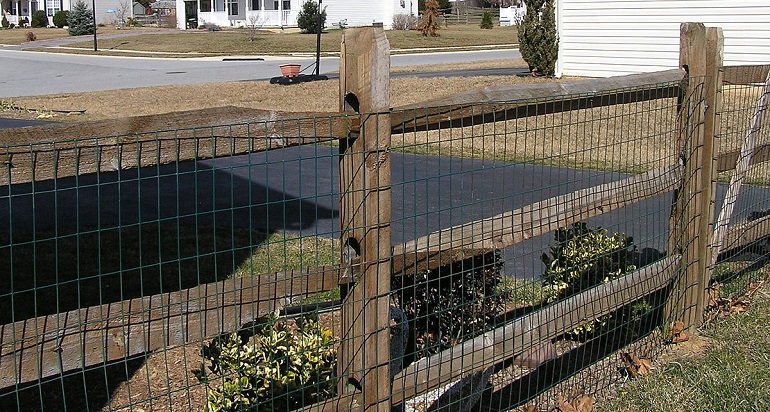Why Fencing Is Better

Easy Fencing Tips
Table of ContentsFencing Guide To Save You A Number Of HeadachesWhy Fencing Is So EssentialFencing Quick guide To Spare People Some HeadachesFencing Idea
If you the appearance of a picket fence however something that's a bit stronger with less upkeep, wrought iron fences might be for you. Vinyl fences are a terrific alternative to all of the fences up above. Depending on which style of fence you pursue when utilizing vinyl to build your fence, vinyl fences can be strong, offer excellent personal privacy, and are long lasting against the weather.
They're likewise less costly too! Considering that they are a non-organic product, they are likewise not vulnerable to rot like wood fences can be. And they likewise offer a little provide to wind storms so they won't break when the windy season comes around. No matter which kind of fence you choose, having a fence is a much safer choice for your family & home than having no fence at all.

Fencing Suggestions For You
With all of this details in mind, you need to be ready to decide on the right toughness of fence that's perfect for you and your requirements. If you have any additional questions about fencing, please don't hesitate to contact us as we're more than happy to assist you in discovering the ideal fence material for your project.
The Basics of Fencing

Why Fencing Is So Crucial
Alternatives to fencing consist of a ditch (often filled with water, forming a moat). Normal farming barbed wire fencing Split-rail fencing typical in timber-rich areas A chain-link wire fence surrounding a field Portable metal fences around a construction website A snow-covered vaccary fence near Ramsbottom in Greater Manchester, UK Agricultural fencing, to keep animals in and/or predators out Blast fence, a safety device that reroutes the high energy exhaust from a jet engine or acoustic fencing, to decrease sound pollution Personal privacy fencing, to provide personal privacy and security Temporary fencing, to supply safety, security, and to direct motion; anywhere short-term access control is needed, specifically on building and construction sites Boundary fencing, to prevent trespassing or theft and/or to keep children and family pets from roaming away.

The list below kinds of locations or facilities often are required by law to be fenced, for safety and security reasons: Facilities with open high-voltage devices (transformer stations, mast radiators). Transformer stations are typically surrounded with barbed-wire fences. Around http://xpresscience.com/xs/members/gasvalley9/activity/1053097/ , wooden fences are used to prevent the issue of eddy currents.
In the United States, the earliest inhabitants declared land by simply fencing it in. Later, as the American government formed, unsettled land ended up being technically owned by the government and programs to register land ownership developed, typically making raw land readily available for low costs or for free, if the owner improved the home, including the construction of fences.
Fencing Info
Otherwise it tends to be on non-owner's side so the fence owner might access the posts when repair work are needed but this is not a legal requirement. Where estate coordinators want to entrench privacy a close-boarded fence or comparable well-kept hedge of a minimum height might be specified by deed.
The hedge and ditch ownership presumption Where a rural fence or hedge has (or in many cases had) an adjacent ditch, the ditch is typically in the exact same ownership as the hedge or fence, with the ownership limit being the edge of the ditch outermost from the fence or hedge.
On the other hand, for typical land, it is the surrounding landowners' responsibility to fence the common's livestock out such as in large parts of the New Forest. Big commons with livestock roaming have actually been greatly decreased by 18th and 19th century Acts for enclosure of commons covering most local units, with most remaining such land in the UK's National Parks.
New Details About Fencing
On the other hand, for typical land, it is the surrounding landowners' task to fence the common's animals out such as in big parts of the New Forest. Large commons with livestock roaming have been considerably reduced by 18th and 19th century Acts for enclosure of commons covering most local systems, with most staying such land in the UK's National Parks.
